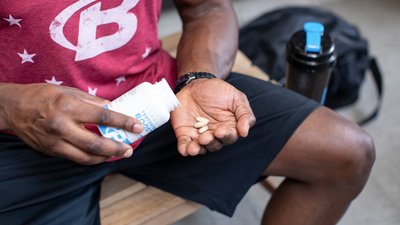Test boosters can be an effective accessory for increasing muscle strength and size, but they won't take the place of a solid resistance-training program. Research has shown regular strength training has the potential to help boost your testosterone levels, not just benefit the testosterone you have.[14] It's a win-win relationship.
Here are a few tips to take your training and T to the next level:
Think big to small: Research shows that starting your workout with compound lifts (bench press, squat, overhead press, etc.) followed by smaller isolation movements leads to a greater anabolic response.[15]
Get in, get out: Try to shorten your workouts without decreasing overall volume. Testosterone levels are higher after shorter workouts, like less than 60 minutes. During that time, keep most rest periods brief, like 30-90 seconds, explains strength coach Parker Hyde in "How to Naturally Boost Testosterone with Exercise."
Keep more weapons in your arsenal: Occasionally use lifting methods like forced reps, negatives, and dropsets to further stress your body. Personal trainer and fitness journalist Michael Berg explains in "6 Ways to Crank Up Your Testosterone Levels" that going beyond muscular failure with these techniques has been shown to pump up T-levels in study subjects.[16]
No, doing it on every set probably isn't a good idea, but going for broke on the final set of a safe exercise—say, curls or shoulder presses—can pay off over time.
As a final note, start using any test booster with the proper mindset. Building your testosterone levels, like building your dream physique, isn't an overnight project. Dig in, do the work, and make choices that will set you up for long-term success.

